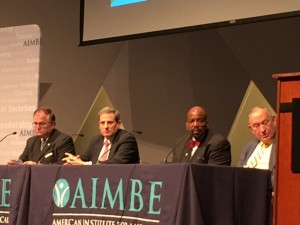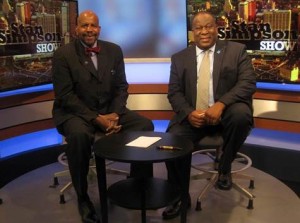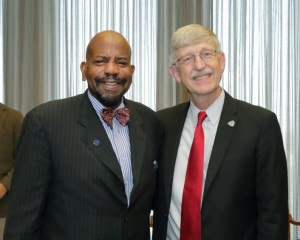
 Last month, the Connecticut Institute for Clinical and Translational Science (CICATS) held its first annual “Celebration of Excellence in Research” for its 17 Core Interest Groups (CIGs).
Last month, the Connecticut Institute for Clinical and Translational Science (CICATS) held its first annual “Celebration of Excellence in Research” for its 17 Core Interest Groups (CIGs).
CIGs were developed to promote collaborative, transdisciplinary research. The CIG concept clearly accommodates the goal of disease-agnostic research, allowing the spontaneous formation of new research enterprises. Investigators from all partnering institutions are encouraged to be a part of CIGs. Current CIG research activities focus on a range of basic, clinical, and translational initiatives on: aging, biomedical engineering, multidisciplinary obesity research, cancer prevention, mental health, cardiovascular diseases, drug discovery, correctional health research, e-health and m-health technologies, injury prevention, stroke and cerebrovascular diseases, occupational safety and health, personalized immunotherapy, musculoskeletal research, sickle cell disease, women’s cancer, and health disparities.
The event celebrated and showcased the work and success of each CIGs, providing an opportunity for faculty and community-based organizations to network for collaborative research projects. It also included brief overviews of research project by CIG researchers and poster displays.
This was a very happy occasion to celebrate our researchers and the remarkable growth they have achieved thus far and will continue to achieve. These programs would not have been possible and successful without the support of our faculty, partners, affiliates, administrators and most importantly, the Connecticut Legislative Black and Puerto Rican Caucus.





 On April 3rd and 4th, the American Institute for Medical and Biological Engineering (AIMBE) hosted its annual 2-day meeting in Washington, DC. This event represents one of the premiere conferences where the leaders in medical and biological engineering from academia, industry, and government gather for cutting-edge programming, social events, and a chance to welcome the newest AIMBE fellows. This year, AIMBE highlighted the Distinguished Leadership Panel featuring the country’s leading experts in the field to discuss AIMBE’s next 25 years. I was honored to be on the panel with a number of distinguished leaders in the field, including Dr. Robert Nerem, Dr. Nicholas Peppas, and Dr. Kenneth Lutchen. I spoke about the organization’s need to be leaders in diversity, advocacy, and the promotion of next-generation science. The event was incredibly rewarding.
On April 3rd and 4th, the American Institute for Medical and Biological Engineering (AIMBE) hosted its annual 2-day meeting in Washington, DC. This event represents one of the premiere conferences where the leaders in medical and biological engineering from academia, industry, and government gather for cutting-edge programming, social events, and a chance to welcome the newest AIMBE fellows. This year, AIMBE highlighted the Distinguished Leadership Panel featuring the country’s leading experts in the field to discuss AIMBE’s next 25 years. I was honored to be on the panel with a number of distinguished leaders in the field, including Dr. Robert Nerem, Dr. Nicholas Peppas, and Dr. Kenneth Lutchen. I spoke about the organization’s need to be leaders in diversity, advocacy, and the promotion of next-generation science. The event was incredibly rewarding.
 Last month, the Connecticut Institute for Clinical and Translational Science (CICATS) held its first annual “Celebration of Excellence in Research” for its 17 Core Interest Groups (CIGs).
Last month, the Connecticut Institute for Clinical and Translational Science (CICATS) held its first annual “Celebration of Excellence in Research” for its 17 Core Interest Groups (CIGs). Last month, Stan Simpson, host of “The Stan Simpson Show” on Fox CT, invited me to be a guest on his show for the second time. During the interview, I explained our current research initiative named “Hartford Engineering A Limb” (HEAL) at the Institute for Regenerative Engineering. The project’s goal is to regenerate a human knee in seven years and a whole limb in fifteen. The field of regenerative engineering is still in its infancy, and through the HEAL project, we are hoping to utilize this new approach to bring life-changing breakthroughs to patients. The interview can be seen on the web, please visit the following link:
Last month, Stan Simpson, host of “The Stan Simpson Show” on Fox CT, invited me to be a guest on his show for the second time. During the interview, I explained our current research initiative named “Hartford Engineering A Limb” (HEAL) at the Institute for Regenerative Engineering. The project’s goal is to regenerate a human knee in seven years and a whole limb in fifteen. The field of regenerative engineering is still in its infancy, and through the HEAL project, we are hoping to utilize this new approach to bring life-changing breakthroughs to patients. The interview can be seen on the web, please visit the following link:
